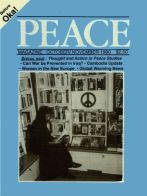
Peace Magazine Oct-Nov 1990, page 12. Some rights reserved.
Search for other articles by Joanna Santa Barbara here
Some years ago I watched a highly-esteemed colleague (one of the co-editors) fall asleep while I delivered a long lecture in a course called "Introduction to Peace Studies." Afterwards he encouraged me tactfully to be less boring. He and several other colleagues introduced me, a traditional teacher, to a very different and rewarding pedagogy.
John Hurst's "A Pedagogy for Peace"1 is a fine essay on the incorporation of peaceful values into the educational process. These values emphasize: (a) the intrinsic worth of each person; b) maximum freedom for each individual; and c) structures thatencourage cooperation rather than competition.
In tbe Introductory course at McMaster, we organize small groups, which are intended to be safe enough to encourage students to examine their values. Many say that their best learning takes place in this setting. Our large lectures have become more interactive. Last year a problem-solving approach was used. With no preliminary input, the student is plunged into a problem in war (in this case, the Central American conflict) and has to acquire the knowledge needed to make sense of it. At times (especially during the extraordinary year 1989-90) examination of current issues in the news media take precedence over the pre-set curriculum.
We have used the contributions of an economist, a political scientist, a career military intelligence officer, a psychiatrist, educators, a moral philosopher, a biologist, and experts in religious studiesandtheology. tearningalsoinvolved multiple media-films, participatory games, music, poetry, and drama.
It takes creativity to evaluate students without subverting the cooperative emphasis. Still, in the university, students must end up with marks. We encourage them to tackle writing assignments cooperatively. Sometimes this is done by presenting their material to the class orally for criticism before writing essays. One assignment isa group effort resulting in an oral presentation. A test involved eliciting a partner's views on a subject and writing a short report on those and one's own opinions.
Integrating thought and action in peace studies is a challenge. One group undertook, as an assignment, to increase community knowledge of the conflict between the Lubicon Indians and the Alberta Government. Some students lack any experience with such educational processes. At the beginningof the year, they are given an outline of the flexible curriculum and of the process. The first session is especially devoted to induction to the process.

Peace Magazine Oct-Nov 1990, page 12. Some rights reserved.
Search for other articles by Joanna Santa Barbara here